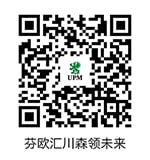2030 around the corner
The most lobbied political process in the EU’s history, the Packaging and Packaging Waste Regulation (PPWR) harnesses the power of packaging design in advancing the circular economy. With the Design for Recycling (DfR) guidelines at its core, the PPWR outlines that all packaging must be recyclable by 2030.
James Pryor, Co-Founder and Managing Partner at Touch Design, testifies that packaging designers are feeling the momentum. James has been following the regulation for years and is actively working to align packaging portfolios with PPWR in its current form. This involves developing packaging prototypes and testing them meticulously at recycling houses.
“Most of our bigger clients want to be very sure that the investments they make result in packaging that is compliant with a good recyclability grade,” James says. “In addition, we also need to consider reuse and material minimization.”
Towards increased harmony
James outlines three possible directions packaging designers can take to align with the PPWR in terms of material selection. These are:
- Completely redesigning packaging
- Eliminating certain materials or
- Replacing materials with more sustainable alternatives.
Currently there are multiple definitions for packaging recyclability, but the PPWR coming into force will create an EU-wide standard. James states:
“The PPWR can actually simplify the job of the packaging designer. Material selection, specification and application will become much more harmonized.”
In addition, the PPWR succeeding will also broaden the offering of recycled content materials used in packaging.
A question of business continuity
When it comes to clients aligning with the regulation, some are more proactive and knowledgeable than others. According to James, cost will always remain a pertinent issue, especially now with the consumer already at their price limit.
“On the other hand, if you’re not compliant by 2030, you won’t be able to sell your products,” James states. “For brands, it’s unacceptable to be taken off the shelf.”
Aligning early with the PPWR also poses opportunities for lowering costs. Under the regulation, so-called Extended Producer Responsibility (EPR) fees will be determined by recyclability grade and the percentage of recycled content in plastic packaging.
“As a packaging designer, when you’re designing for recyclability, you’re also probably making your EPR fees smaller for your clients,” James says.
One success case of innovative and circular packaging design Touch Design has worked on is the John West ECOTWIST aluminum foil stickers found in multipack tuna cans. In place of plastic wrap and cardboard, the multipack of cans is held together with aluminum Smartstrips, which have been externally certified as fully recyclable in the UK. As a result, significant environmental and logistical benefits are achieved, earning the packaging the Pre-Commercialized Recyclable Packaging award at the 2024 Sustainability Awards.
In conclusion, James believes that it’s never too early – or too late – to prepare for the PPWR and future-proof packaging solutions in line with recyclability and circularity.
“Many of our clients are big FMCG businesses – they know how slowly their ships move. The PPWR will certainly help the industry steer in a much more positive direction,” James concludes.
